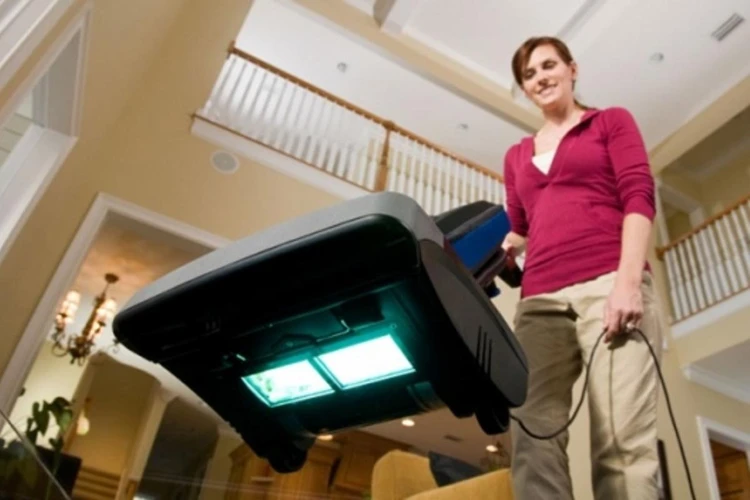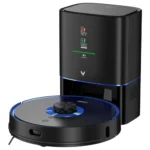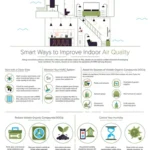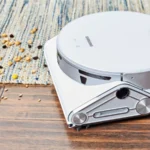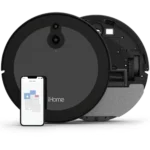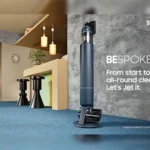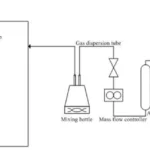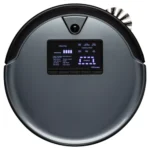Picture this: You’ve just finished vacuuming your home and everything looks spotlessly clean. However, what you can’t see are the pesky microbes that are still lurking around in your carpets and upholstery. These harmful pathogens can cause allergies, respiratory illnesses, and spread illness throughout your home. This is where UV-C technology comes in. In this article, we will explore the benefits of using UV-C light in your smart vacuum cleaner. But first, let’s understand what UV-C light is and how it works.
What is UV-C Light?

As technology continues to advance, so do the cleaning options available. One such innovation is the use of UV-C light in smart vacuum cleaners. UV-C light, also known as ultraviolet light, is a type of radiation that is commonly used for its disinfecting properties. However, many people are still confused about what it is and how it works. In this section, we will dive into the science behind UV-C light, as well as explore how it is utilized in smart vacuums. Whether you suffer from allergies or are simply looking for a more efficient way to clean your home, understanding UV-C technology could help improve your cleaning routine.
The Science Behind It
UV-C light is a short-wavelength, high-energy form of ultraviolet light that has the power to damage the DNA and RNA of microorganisms, thereby rendering them unable to reproduce and cause harm. According to research, UV-C light between 200 and 280 nanometers can be effective against a variety of pathogens such as bacteria, viruses, fungi, and mold.
When UV-C light comes into contact with microorganisms, it penetrates their cell membranes and damages the genetic material, which disrupts their ability to replicate or cause infections. With repeated exposure, the microorganisms eventually die-off, effectively neutralizing them. Fortunately, this is a safe and effective process that doesn’t depend on chemicals or other potentially harmful substances.
The effectiveness of UV-C light can be increased by ensuring that optimal conditions are maintained. This includes the distance between the UV-C light source and the target surface, the duration of exposure, and the degree of airborne moisture. By fine-tuning these variables, you can achieve maximum antimicrobial effect with minimal exposure time.
Many people wonder how UV-C light compares to other methods of air purification, such as HEPA filters. While HEPA filters are effective at capturing microscopic airborne particles, they do not necessarily remove or neutralize them. In contrast, UV-C light can destroy harmful pathogens and help reduce the spread of communicable diseases. According to this comparison, using both HEPA filters and UV-C light in tandem can result in a much cleaner, healthier indoor environment.
In addition to bacteria and viruses, UV-C light can also eliminate mold, fungi, dust mites, and other common allergens that can trigger asthma and allergies. By constantly reducing the overall microbe load in the home, a UV-C smart vacuum cleaner can help keep the air fresher, cleaner, and more comfortable.
The science behind UV-C light is clear: it is a powerful, non-chemical method for disinfecting and purifying indoor air and surfaces. With proper use and maintenance, it can help reduce the spread of disease, manage allergies and asthma, and provide a healthier indoor living environment.
How Does it Work in Smart Vacuum Cleaners?
UV-C light technology has been around for a while, but it is only in recent years that it has been integrated into smart vacuum cleaners. This amazing technology works wonders when combined with the cleaning abilities of a smart vacuum cleaner.
In simple terms, UV-C technology uses short-wavelength ultraviolet light to eradicate harmful pathogens, viruses, bacteria, and other microorganisms. It works by targeting the DNA of the microorganisms that may be present on a surface or in the air.
So how does this technology work in smart vacuum cleaners? These vacuums are equipped with special UV-C lamps that emit ultraviolet light that penetrates deep into surfaces, including carpets, rugs, and other fabric materials. When switched on, the lamp produces a high-frequency UV-C light that penetrates the surface and breaks down the DNA of microorganisms.
To further understand how UV-C technology works in smart vacuum cleaners, let’s go over the process in detail in the following HTML table:
| Step | Description |
|---|---|
| Step 1: | The smart vacuum cleaner is turned on and the UV-C light feature is activated. |
| Step 2: | The UV-C lamp emits high-frequency UV-C light. |
| Step 3: | The UV-C light penetrates deep into surfaces, including carpets, rugs, and other fabric materials. |
| Step 4: | The UV-C light breaks down the DNA of microorganisms that come into contact with it. |
| Step 5: | The smart vacuum cleaner then suctions up any dirt, dust, and debris on the surface, along with any dead microorganisms that were destroyed by the UV-C light. |
| Step 6: | The collected debris and dead microorganisms are then filtered through the vacuum’s HEPA filter, ensuring that only clean air is released back into the room. |
By using UV-C technology in smart vacuum cleaners, you can be confident that you are not only cleaning surfaces but also actively eliminating any potential health hazards.
Benefits of UV-C Light in Smart Vacuum Cleaners
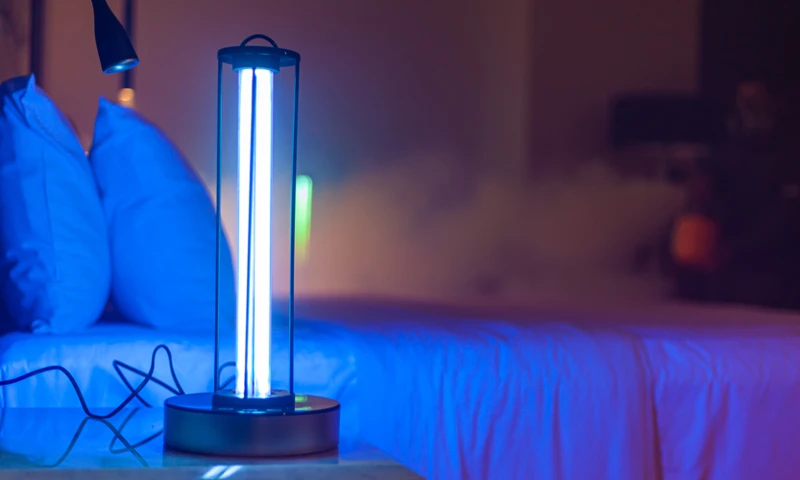
Are you tired of using traditional vacuum cleaners that only remove visible dirt and dust from your floors? If so, it’s time to upgrade to a smart vacuum cleaner with UV-C light technology. The benefits of using UV-C light in smart vacuums extend beyond simple cleaning. This innovative technology can help to improve your indoor air quality, reduce allergies, and eliminate harmful pathogens that can cause illness. In this section, we will explore the numerous benefits of incorporating UV-C light into your cleaning routine, and show you how this technology can help make your home a cleaner, healthier place to live.
1. Destroys Harmful Pathogens
Using UV-C light in your smart vacuum cleaner has numerous benefits. One of the most important benefits is its ability to destroy harmful pathogens. These pathogens can harm our health if they are not cleaned properly. Let’s take a look at some of the pathogens that can be easily destroyed with the help of UV-C light in smart vacuum cleaners and the benefits of doing so:
- Bacteria: Bacteria can cause various kinds of diseases, and some strains can be extremely harmful. Using a UV-C light in your smart vacuum cleaner is an effective way to eliminate bacteria on surfaces and in the air. By utilizing the UV-C light, your vacuum cleaner can sterilize and eliminate bacteria in your home.
- Viruses: Viruses are responsible for many illnesses, including the common cold and flu. UV-C light can destroy viruses, making it an effective way to protect yourself and your family from infections.
- Mold: Mold can grow in damp areas of your home, and some forms can be toxic. By using a smart vacuum cleaner with a UV-C light, you can eliminate mold spores and prevent the spread of mold in your home.
- Allergens: Dust mites and pet dander are common allergens that can be found in homes. UV-C light can kill these allergens, helping to reduce allergy symptoms and improve overall indoor air quality.
Using UV-C light in your smart vacuum cleaner can help to destroy harmful pathogens that can lead to health problems. By sterilizing and eliminating bacteria, viruses, mold, and allergens, you can create a cleaner and healthier environment in your home.
2. Eliminates Unpleasant Odors
One of the most unpleasant things that can happen in a house is the presence of odors. Cooking smells, pet odors, stale air, and smoking are just a few examples of the different types of odors that can accumulate over time. Fortunately, a smart vacuum cleaner equipped with UV-C light can help eliminate these unpleasant odors.
How does it work?
UV-C light has the ability to break down the molecules that create the odors. When the UV-C light is activated, it targets the bacteria or mold that causes the odor and breaks down its DNA, effectively killing it. This process not only eliminates odors but also ensures a cleaner and more hygienic environment in general.
Advantages of eliminating odors with UV-C light
By using a smart vacuum cleaner with UV-C light to eliminate unpleasant odors, you can enjoy several benefits, including:
| 1. Fresh and clean environment | Eliminating odors leaves your home smelling fresh and clean, providing a more inviting and welcoming atmosphere. |
| 2. Health benefits | Eliminating odors caused by bacteria or mold can improve the air quality in your home and reduce the risk of respiratory problems. |
| 3. Improved mood | Unpleasant odors can lead to negative emotions, such as frustration or stress. Eliminating these odors can improve your overall mood and reduce stress levels. |
| 4. Increased comfort | An unpleasant odor can make you feel uncomfortable and uneasy in your own home. By eliminating these odors, you can enjoy increased comfort and relaxation. |
Final thoughts
Using a smart vacuum cleaner equipped with UV-C light to eliminate unpleasant odors is an effective and efficient way to keep your home smelling fresh and clean. By breaking down the molecules that cause the odors, UV-C light offers impressive benefits for both your physical and emotional well-being. And with the added convenience of a smart vacuum cleaner, you can enjoy these benefits without putting in the extra effort.
3. Improves Indoor Air Quality
One of the key benefits of using a UV-C light in your smart vacuum cleaner is that it can significantly improve indoor air quality. In fact, it is one of the most important reasons to consider investing in a UV-C smart vacuum cleaner.
Indoor air quality can be a major concern, particularly for those who suffer from allergies or respiratory problems. According to the Environmental Protection Agency (EPA), indoor air can contain pollutants that are 2-5 times higher than outdoor air. This is due to a variety of factors, such as poor ventilation and the use of cleaning products that contain harsh chemicals.
By using a UV-C smart vacuum cleaner, you can help to eliminate harmful pathogens like bacteria, viruses, and mold, which can improve the overall quality of the air in your home.
Here are some of the ways that using a UV-C smart vacuum cleaner can improve indoor air quality:
| Benefit | Description |
|---|---|
| Reduces Dust Mites | UV-C light can help to reduce the number of dust mites in your home. Dust mites are a common allergen that can cause asthma and other respiratory problems. |
| Eradicates Harmful Pathogens | UV-C light can help to eradicate harmful pathogens like bacteria, viruses, and mold. This can reduce the likelihood of illnesses and infections that can be caused by these pathogens. |
| Eliminates Unpleasant Odors | UV-C light can help to eliminate unpleasant odors in your home, such as those caused by pet dander or cooking odors. |
| Improves Respiratory Health | By reducing the number of harmful pathogens and allergens in your home, a UV-C smart vacuum cleaner can help to improve respiratory health and reduce the risk of asthma attacks, allergies, and other respiratory problems. |
| Promotes a Healthy Environment | By improving indoor air quality, a UV-C smart vacuum cleaner can help to promote a healthy environment for you and your family. |
If you suffer from allergies or respiratory problems, or if you want to ensure that you are breathing clean air in your home, then a UV-C smart vacuum cleaner can be an excellent investment. By eliminating harmful pathogens, reducing allergens, and improving indoor air quality, you can enjoy a cleaner and healthier living space.
4. Reduces Allergies
One of the most significant benefits of using UV-C light in your smart vacuum cleaner is its ability to reduce allergies caused by dust mites and other common allergens. Dust is a common allergen, and it’s often overlooked as a potential cause of allergies. Even if you keep your home tidy, dust can still accumulate in areas that are difficult to reach.
Using a UV-C light in your smart vacuum cleaner can help reduce the allergens that cause these allergic reactions. The UV-C light is highly efficient in killing dust mites, bacteria, and viruses. In fact, it can eliminate up to 99.9% of germs, which is a significant improvement over traditional cleaning methods. This reduction in allergens can greatly benefit those with allergies or asthma.
UV-C light can remove pet dander and hair from your home. Pet dander and hair are common allergens that can cause allergic reactions in sensitive individuals. The UV-C light in your smart vacuum cleaner breaks down these allergens, making them easier to remove from the home.
UV-C light can also prevent the formation of mold and mildew, which can cause significant health problems for those who suffer from allergies. Mold and mildew thrive in damp areas, and they can be difficult to remove using traditional cleaning products. However, a UV-C light destroys the spores that cause mold and mildew, reducing your exposure to these allergens.
If you or anyone in your household suffer from allergies or asthma, a smart vacuum cleaner with a UV-C light could be just what you need to improve your quality of life. By reducing allergens and germs in your home, you can breathe easier and live more comfortably.
5. Saves Time and Effort
Using a smart vacuum cleaner equipped with UV-C light can save you a lot of time and effort. Here are some of the ways in which it does so:
| Benefit | Details |
| 1. Deep Cleaning | The UV-C light disinfects and sterilizes surfaces thoroughly, achieving a deep clean without requiring much effort or time. |
| 2. Increased Efficiency | Without UV-C light, the cleaning process takes longer and may not be as thorough, requiring more effort to achieve a clean equivalent to one that a UV-C enabled smart vacuum cleaner can accomplish quickly and efficiently. |
| 3. Saves Time on Maintenance | UV-C light technology reduces the growth of bacteria and viruses on surfaces, meaning that the maintenance or cleaning of the vacuum cleaner itself, including its filter, can be done less frequently, saving time and effort. |
| 4. Reduces the Need for Chemical Cleaners | UV-C light disinfects and sterilizes surfaces without the need for harsh chemicals, which can take time and effort to apply and clean off. By opting for a UV-C enabled smart vacuum cleaner, you also save time spent finding, purchasing, and using chemical cleaners, while also reducing chemical exposure. |
| 5. Convenient Scheduling and Automation | UV-C enabled smart vacuum cleaners are designed to function autonomously, allowing you to schedule and automate the cleaning process. This takes care of the cleaning process efficiently without needing to supervise or be present in the room, further saving time and effort. |
As can be seen from the table, using a smart vacuum cleaner with UV-C light technology can save you time and effort in multiple ways. It provides a deep clean, reduces the need for chemical cleaners, increases efficiency, and allows for convenient scheduling and automation. By saluting harmful pathogens, unpleasant odors, and reducing allergies, your home or office can be clean and safe from harmful pathogens.
How to Choose the Right UV-C Smart Vacuum Cleaner
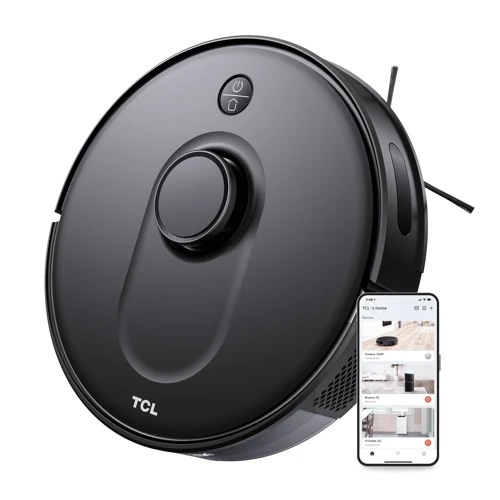
Choosing the right UV-C smart vacuum cleaner can be a daunting task, especially if you’re unfamiliar with the technology. With so many models on the market, it can be difficult to know where to start. However, fear not! By following a few simple tips and tricks, you’ll be able to select a model that meets your needs and fits within your budget. In the following sections, we’ll explore some key factors to consider when choosing a UV-C smart vacuum cleaner. So, strap in and let’s get started!
Consider Your Specific Needs
When choosing a UV-C smart vacuum cleaner, it’s important to consider your specific needs to find the right device for you. Here are some factors to consider:
- Size of your home: If you live in a large home, you may want to invest in a model with a larger dustbin and longer battery life to save time on emptying and recharging.
- Type of flooring: Different models may work better on carpet, hardwood, or tile floors. Consider which types of flooring you have in your home and look for a vacuum cleaner that is best suited for your needs.
- Pets: If you have pets, you may want a vacuum cleaner with a high-efficiency particulate air (HEPA) filter to capture pet hair and dander. Some models also come with specialized brushes and attachments for pet hair.
- Allergies: If you suffer from allergies or asthma, a vacuum cleaner with a HEPA filter and UV-C light can help reduce allergens and bacteria in your home. Look for models that are certified asthma and allergy friendly.
- Budget: UV-C smart vacuum cleaners come at different price points, so consider your budget and look for models that offer the features you need within your price range.
By considering your specific needs, you can find a UV-C smart vacuum cleaner that will help make cleaning your home more efficient and effective.
Look for Additional Features
When looking for a UV-C smart vacuum cleaner, it is important to consider additional features that can enhance your cleaning experience. Here are some features you should look for when choosing a smart vacuum cleaner:
- HEPA filter: A high-efficiency particulate air (HEPA) filter can trap small particles like pollen, pet dander, and dust mites, improving air quality and reducing allergies.
- Smart functionality: Some smart vacuum cleaners can be controlled through a mobile app or voice assistants like Amazon Alexa or Google Assistant, making it easier to set cleaning schedules and control settings remotely.
- Lithium-ion battery: A lithium-ion battery can provide longer run time and faster charging compared to other types of batteries.
- Multi-surface cleaning: Look for a UV-C smart vacuum cleaner that can clean different surfaces like carpet, hardwood, and tile. Make sure it can adjust its suction power depending on the surface for efficient cleaning.
- UV-C light sensors: Some smart vacuum cleaners have sensors that detect UV-C light levels in your home, adjusting the cleaning intensity and cycle time accordingly.
- Collision sensors: A smart vacuum cleaner with collision sensors can detect and avoid obstacles, preventing damage to furniture and walls.
These additional features can make your cleaning experience easier, more efficient, and more effective. When choosing a UV-C smart vacuum cleaner, consider which of these features are important to you and your household’s specific needs. Don’t forget to read reviews and ratings from other users to ensure you make the right choice.
Check the Quality of the UV-C Light
When looking for a UV-C smart vacuum cleaner, it’s important to check the quality of the UV-C light to ensure that it effectively eliminates harmful pathogens and bacteria in the air and on surfaces. Here are some factors to consider:
| Factor | Description |
|---|---|
| Wavelength | The wavelength of the UV-C light is important as it determines its ability to penetrate and destroy microorganisms. Look for a vacuum cleaner with a wavelength of 200-280 nm, which is most effective at killing germs. |
| Intensity | The intensity of the UV-C light determines how quickly it can kill germs. Look for a vacuum cleaner with an intensity of at least 1000 μW/cm² for optimal results. |
| Lamp Life | The lamp life of the UV-C light is important to consider as it affects how long the vacuum cleaner will be effective. Look for a vacuum cleaner with a lamp life of at least 10,000 hours. |
| Placement | Check where the UV-C light is placed in the vacuum cleaner. Is it close enough to the surface or air that needs to be sanitized? Are there any obstructions that may block the UV-C light? Make sure the placement is optimal for maximum effectiveness. |
| Safety Features | Finally, it’s essential to check for safety features in the vacuum cleaner that prevent accidental exposure to UV-C light. Look for features such as automatic shut-off when the vacuum cleaner is turned upside down or when the UV-C light is exposed. |
By taking the time to consider these factors, you can ensure that the UV-C light in your smart vacuum cleaner is of high quality and will effectively sanitize surfaces and air. Ultimately, this will provide a higher level of protection against harmful pathogens and bacteria and create a healthier, safer indoor environment.
Read Reviews and Ratings
When looking for a UV-C smart vacuum cleaner, it’s important to read reviews and ratings from other customers to ensure you’re getting a reliable and effective product. Here are some tips to help you make an informed decision:
- Research Different Brands: Take time to read reviews from different brands to get an idea of what’s available on the market.
- Pay Attention to Feedback: Look for feedback from customers who have actually used the product. Pay attention to any common complaints or praises to help you decide.
- Check the Star Ratings: Don’t just look at the number of stars, but also read the comments to get a better understanding of why people rated the product the way they did.
- Consider the Number of Reviews: If a product has only a few reviews, this may not be enough information to make an informed decision. Look for products with a high number of reviews to get a more accurate reflection of its quality.
- Look for Reviews on Different Sites: Don’t just rely on the reviews on the brand’s website. Look for reviews on other sites like Amazon, Best Buy, or specialty vacuum cleaner review sites.
By taking the time to read reviews and ratings, you can make a more informed decision about which UV-C smart vacuum cleaner is right for you. Remember to consider the specific needs you have for your home and lifestyle, and use reviews to narrow down your options to the top contenders.
Frequently Asked Questions
As you learn more about UV-C light and its benefits in smart vacuum cleaners, you may have some questions about its safety, effectiveness, and practicality. That’s why we have compiled a list of frequently asked questions to help address any concerns or lingering doubts you may have. Read on to learn more about UV-C light and how it can transform the way you clean your home.
What is UV-C Light?
UV-C light is a type of ultraviolet light with a wavelength between 200 and 280 nanometers. This short-wavelength light is highly effective at killing bacteria and viruses because it damages their DNA and RNA, preventing them from replicating and ultimately causing their destruction. UV-C light is considered a germicidal light because it is capable of killing bacterial and viral pathogens on a wide range of surfaces.
Unlike visible light, UV-C light cannot be seen by the naked eye, but it can be detected by specialized equipment. It is widely used in medical and laboratory settings as a means of sterilizing equipment and surfaces, but it is now also being incorporated into smart vacuum cleaners as a means of killing germs and reducing odors.
While other types of ultraviolet light can be harmful to humans and animals, UV-C light is considered relatively safe because it does not penetrate deeply into the skin or eyes. However, it is still important to take precautions and avoid direct exposure to the light.
UV-C light is a powerful tool for sterilizing and sanitizing surfaces, and its ability to kill bacteria and viruses makes it an ideal addition to smart vacuum cleaners. By incorporating UV-C light into their cleaning routines, homeowners can enjoy a cleaner and healthier living space.
Is UV-C Light Safe?
Is UV-C Light Safe?
The safety of UV-C light has been the subject of numerous studies, and the consensus is that when used correctly, it is safe for human exposure.
Risks of UV-C Exposure
However, it’s important to note that UV-C light can cause harm in certain circumstances. Prolonged exposure to UV-C light can cause skin irritation and damage to the eyes, which is why it’s vital to avoid direct exposure without proper protective gear.
UV-C light can break down certain materials over time, including plastics and rubber. It’s essential to use caution when using UV-C light for prolonged periods, and make sure to follow the manufacturer’s instructions carefully.
Protective Measures
To avoid exposure to UV-C radiation, users should follow manufacturer instructions and always wear appropriate protective gear, including goggles, gloves, and long sleeves. It’s crucial to keep UV-C light away from pets, plants, and children to prevent accidental exposure.
UV-C Safety Tips
Here are some safety tips when using a UV-C Smart Vacuum Cleaner:
| Tip #1: Always follow the manufacturer’s instructions carefully. |
| Tip #2: Wear protective gear, including goggles, gloves, and long-sleeved clothing. |
| Tip #3: Keep the vacuum cleaner and UV-C light out of the reach of children and pets. |
| Tip #4: Do not look directly at the UV-C light or expose your skin or eyes to it. |
When used correctly and with appropriate safety measures, UV-C light is safe for human exposure. It’s essential to follow guidelines carefully and use the proper protective gear to avoid any potential risks.
How Long Should I Run the UV-C Light?
UV-C light is a powerful technology that can destroy harmful pathogens and bacteria in your home in a matter of seconds. However, it is crucial to know how long to run the UV-C light in your smart vacuum cleaner for optimal results. Different vacuums may have different recommended running times, so it is important to check the user manual or contact the manufacturer for specific instructions.
Here are some general guidelines to keep in mind:
- For standard-sized rooms: It is typically recommended to run the UV-C light in your smart vacuum cleaner for 10-20 minutes to ensure that all surfaces receive adequate exposure.
- For larger rooms: You may need to run the UV-C light for up to 30 minutes to ensure that all areas of the room are covered.
- For high-traffic areas: If you are focusing on a specific area that receives a lot of foot traffic or exposure to harmful pathogens, you may want to run the UV-C light for an extra 5-10 minutes to ensure a thorough cleaning.
It is important to follow the recommended running times to ensure that the UV-C light is effective in killing harmful bacteria and other pathogens. Keep in mind that UV-C light can be harmful to humans and animals in high doses, so always follow the manufacturer’s recommendations for safe use.
Can UV-C Light Damage Surfaces or Furniture?
Concerns about the potential damage UV-C light might cause to household surfaces and furniture are valid. However, if used correctly, UV-C light in smart vacuums does not pose a significant risk to surfaces.
UV-C light is powerful, but the exposure time needed to cause significant damage is much longer than the brief contact time of smart vacuums. Nonetheless, there are a few things to keep in mind when using a UV-C smart vacuum:
1. Be Careful with Delicate Materials
Materials such as silk, leather, and rubber are more susceptible to damage from UV-C light. If you have delicate furnishings or clothing, keep them away from the direct path of the UV-C light.
2. Do Not Directly Stare at the UV-C Light
UV-C light, while safe for surfaces, can be damaging to eyesight. It is important not to stare directly at the light source. While most smart vacuums have safety features that prevent accidental exposure, it is still advisable to exercise caution around the UV-C light.
3. Check the Quality of the UV-C Light
The quality of the UV-C light can also be a determining factor in preventing surface damage. Cheap or unreliable bulbs may not be manufactured to the same specifications as high-quality bulbs, leading to the release of harmful ozone or an inferior germ-killing effect.
To avoid any potential damage, it is essential to look for quality UV-C bulbs and carefully follow manufacturer’s instructions. When in doubt, consult the user manual or seek professional advice.
| Do’s | Dont’s |
|---|---|
| Use UV-C smart vacuum on surfaces such as ceramic tiles, wooden floors, and carpets, as they are not easily damaged by the UV-C light. | Expose delicate materials such as silk, leather, and rubber to the UV-C light as they are more susceptible to damage. |
| Use high-quality UV-C bulbs in the smart vacuum to reduce the chance of damage caused by inferior bulbs. | Stare directly at the UV-C light as it can be damaging to the eyes. |
| Consult the manufacturer’s instructions and user manual to ensure that the smart vacuum is used correctly to prevent damage to surfaces. | Assuming that all UV-C smart vacuums are created equal – some models may be less effective or have inferior bulbs that could damage surfaces. |
UV-C light in smart vacuums is unlikely to cause extensive damage to surfaces when used correctly. To prevent any undesirable effects, it is critical to use high-quality bulbs, follow instructions, and exercise caution around the light source.
Do I Still Need to Use Chemical Cleaners?
It’s a common misconception that using UV-C light in your smart vacuum cleaner means you no longer need to use chemical cleaners. While UV-C light is effective at destroying harmful pathogens and eliminating unpleasant odors, it’s important to note that it doesn’t work like a traditional cleaner that can remove dirt and grime from surfaces.
So, do you still need to use chemical cleaners?
The answer is, it depends. If you’re using your UV-C smart vacuum cleaner to simply maintain a clean environment or perform light cleaning tasks, then you may not need to use chemical cleaners. However, for more heavy-duty cleaning tasks or removing stubborn stains, traditional chemical cleaners may still be necessary.
Consider the following:
- In some cases, a combination of UV-C light and chemical cleaners may provide the best results.
- UV-C light doesn’t work on fabrics or porous surfaces, so traditional cleaning methods may still be necessary for these areas.
- While UV-C light is effective at destroying harmful pathogens, it may not be enough to completely sanitize an area. In some cases, additional cleaning methods may be necessary.
In conclusion, using UV-C light in your smart vacuum cleaner can be a great way to improve indoor air quality and reduce allergies. While it may not completely eliminate the need for traditional cleaning methods, it can certainly be a useful tool in your cleaning arsenal. Ultimately, the decision to use chemical cleaners or rely solely on UV-C light will depend on your individual needs and preferences.
Conclusion
In conclusion, it is clear that UV-C light has many benefits when used in smart vacuum cleaners. From eliminating harmful pathogens to reducing allergies and improving indoor air quality, UV-C light technology offers a safer, more efficient and effective way to clean your home.
However, it is important to remember that not all UV-C smart vacuum cleaners are created equal. Before making a purchase, consider your specific needs and look for additional features that may enhance your cleaning experience, such as automatic docking and charging, mobile app controls, and voice assistant compatibility.
Moreover, the quality of the UV-C light is also important, as this will directly impact its ability to destroy germs and bacteria effectively. Reading reviews and ratings from other customers can also provide valuable insights into the efficiency of the vacuum cleaner and its UV-C light.
While UV-C light technology can significantly reduce the need for harsh chemical cleaners, it is important to note that it is not a complete replacement. For deep-cleaning and tough stains, chemical cleaners may still be necessary.
Overall, using a UV-C smart vacuum cleaner is a great way to keep your home clean and healthy, but it is important to complement it with proper cleaning habits and the use of other cleaning tools and products when needed.
Frequently Asked Questions
UV-C light is a type of ultraviolet light that has a wavelength of 200 to 280 nanometers, which can destroy bacteria, viruses, and other harmful pathogens.
UV-C light can be harmful to humans and pets, so it is important to use it safely and keep it away from your eyes and skin. Smart vacuum cleaners with UV-C lights have safety features that prevent them from turning on when the vacuum is lifted.
How Does UV-C Light Work in Smart Vacuum Cleaners?
UV-C light in smart vacuum cleaners uses the same technology used to sterilize medical equipment in hospitals. As the vacuum cleaner moves around your home, the UV-C light kills bacteria, viruses, and other pathogens on surfaces and in the air.
What Are the Benefits of Using UV-C Light in Smart Vacuum Cleaners?
Using a smart vacuum cleaner with UV-C light can help destroy harmful pathogens, eliminate unpleasant odors, improve indoor air quality, reduce allergies, and save time and effort.
UV-C light can damage certain materials over time, such as plastics and fabrics. However, smart vacuum cleaners with UV-C lights are designed with protective features to prevent any potential damage to surfaces or furniture.
Using a smart vacuum cleaner with UV-C light can help reduce the need for chemical cleaners. However, for heavily soiled areas or for a deeper clean, you may still want to use a traditional cleaner.
The amount of time you should run the UV-C light depends on the size of the area being cleaned. Check the manufacturer’s instructions for recommended run times.
How Do I Choose the Right UV-C Smart Vacuum Cleaner?
Consider your specific needs, look for additional features, check the quality of the UV-C light, and read reviews and ratings before making a decision.
What Additional Features Should I Look for in a UV-C Smart Vacuum Cleaner?
Look for features like HEPA filters, multiple cleaning modes, and programmable schedules to maximize the benefits of using a smart vacuum cleaner with UV-C light.
How Does UV-C Light Reduce Allergies?
UV-C light kills bacteria and other allergens that can trigger allergies, which helps reduce the number of allergens in your home and can lead to reduced allergy symptoms.
